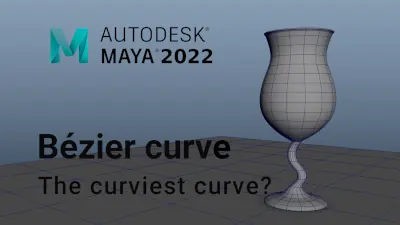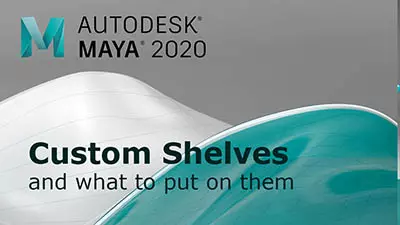Complex UV Layout in Maya
Over the last couple of years UV layout in Maya has changed for the better. In this course we're going to be taking a look at some of those changes as we UV map an entire character
#
1
03-10-2006
, 06:51 AM
Blend shapes question
If you believe in telekinesis, raise my right hand.
#
2
03-10-2006
, 07:29 AM
#
3
03-10-2006
, 07:47 AM
Registered User
Join Date: Aug 2004
Join Date: Aug 2004
Posts: 408
Yea -- it depends on the engine. Though I don't see how that explaination really works.
Essentially what I believe the source is referring to is that the engine needs to know all the end vertices along with the start vertices which will take up as much RAM as if it WERE adding extra polygons. (there's little difference between storing 6 vertices, or 3 vertices in 2 different positions)
And with RAM being the largest concern in videogame graphics right now (due to perpixel lighting models separating vertex count from lighting calls/passes) I can see how your source would assume that extra vertices will cause similar slowdowns to having extra polygons.
There are however certain other issues that need to be taken into consideration:
1) Whether or not the blendshape is baked or procedural.
If the blendshape is procedural -- like realtime lipsyncing... you won't notice the RAM be hit. If its a scripted animation, like something you'd do in Maya -- then you might.
2) The extra vertice data will NOT be stored in VideoRam (except in consoles and lower-end PCs which share RAM with the videocard) -- the GPU doesn't animate, the CPU does all that crap... so the GPU RAM should only have the endstate vertice data. This of course assumes your engineer isn't stupid and places non-rendered clones in VideoRAM wasting valuable megabytes for something which will never appear.
3) There's no proxy or bone animating the blendshape -- if its Maya-style blendshape then it probably would take up the RAM as if it were the extra amounts of polygons... if they group vertices somehow (bones/proxies/parenting/what-have-you) then there would be no RAM limitations -- it would only need to set rotation/animation data per-bone/proxy/parent and interpret via weights and the likes what the vertices should pull to.
Basically -- in many cases... yes it should suck up as much physical (system) RAM as adding the extra polygons, but shouldn't waste lighting/shading calls though.
#
4
03-10-2006
, 07:48 AM
If you believe in telekinesis, raise my right hand.
Posting Rules Forum Rules
Similar Threads
Modeling Question - Blend Shapes - Closing a Hole in a Model
by Meatus in forum Maya Basics & Newbie Lounge replies 0 on 08-07-2013
Blend shapes
by pineapple_pirate in forum Maya Basics & Newbie Lounge replies 0 on 08-06-2010
Question re corrective blend shapes
by gubar in forum Maya Basics & Newbie Lounge replies 2 on 23-03-2008
Blend Shape Dilemma!!
by adamator in forum Maya Basics & Newbie Lounge replies 2 on 15-08-2007
another question about blend shapes
by caligula666 in forum Maya Basics & Newbie Lounge replies 2 on 20-08-2006
Topics
Free Courses
Full Courses
VFX News
How computer animation was used 30 years ago to make a Roger Rabbit short
On 2022-07-18 14:30:13
Sneak peek at Houdini 19.5
On 2022-07-18 14:17:59
VFX Breakdown The Man Who Fell To Earth
On 2022-07-15 13:14:36
Resident Evil - Teaser Trailer
On 2022-05-13 13:52:25
New cloud modeling nodes for Bifrost
On 2022-05-02 20:24:13
MPC Showreel 2022
On 2022-04-13 16:02:13









